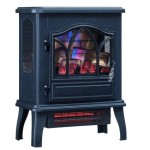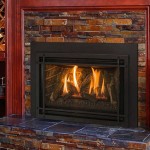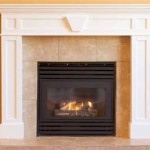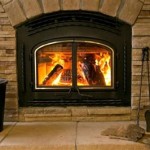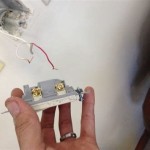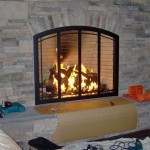```html
Gas Fireplace Utah: A Comprehensive Guide
Utah residents seeking efficient and aesthetically pleasing heating solutions often turn to gas fireplaces. These appliances offer a blend of warmth and ambiance, providing an alternative or supplement to central heating systems. The popularity of gas fireplaces in Utah stems from their ease of use, fuel efficiency compared to traditional wood-burning fireplaces, and the variety of styles available to complement diverse home aesthetics.
Choosing the right gas fireplace for a Utah home involves careful consideration of several factors, including heating needs, space limitations, and budget constraints. Understanding the different types of gas fireplaces and their associated features is crucial for making an informed decision. This guide aims to provide a comprehensive overview of gas fireplaces in Utah, covering essential aspects from selection to installation and maintenance.
Types of Gas Fireplaces Available in Utah
The gas fireplace market offers a range of options, each with its own advantages and disadvantages. Understanding these differences is vital for selecting a fireplace that aligns with individual requirements.
Gas Inserts: These are designed to be installed within an existing wood-burning fireplace. They offer a relatively simple way to convert an inefficient fireplace into a modern, clean-burning heat source. Gas inserts typically feature a sealed combustion system, ensuring efficient and safe operation. The venting options for gas inserts usually involve utilizing the existing chimney, often with a flexible liner installed to improve draft and safety.
Gas Log Sets: These consist of ceramic or refractory logs placed within an existing fireplace. They offer a more aesthetic appeal than actual heating functionality, as they are less efficient than gas inserts. Gas log sets can be vented or ventless. Vented gas log sets require an open damper for proper ventilation of combustion byproducts, while ventless sets are designed to burn cleanly and do not require a chimney. However, ventless models are often subject to stricter regulations due to concerns about indoor air quality.
Freestanding Gas Fireplaces: These are self-contained units that can be placed against a wall or in a corner of a room. They are relatively easy to install and offer flexibility in terms of placement. Freestanding gas fireplaces often feature a direct vent system, which draws combustion air from outside and vents exhaust gases directly outdoors. This ensures efficient and safe operation.
Direct Vent Gas Fireplaces: As mentioned above, direct vent fireplaces are a popular choice in Utah. They utilize a sealed combustion system, drawing air from outside and venting exhaust gases directly outdoors through a coaxial or dual-pipe venting system. This design eliminates the need for a traditional chimney and ensures optimal efficiency and safety.
Installation Considerations for Gas Fireplaces in Utah
Proper installation is paramount for the safe and efficient operation of a gas fireplace. It is strongly recommended to hire a qualified and licensed professional for all gas fireplace installations in Utah. This ensures compliance with local building codes and safety regulations.
Venting Requirements: The venting system is a critical component of a gas fireplace. The type of venting required depends on the type of fireplace and local building codes. Direct vent fireplaces require a specific venting system designed for their sealed combustion system. Vented gas log sets require an open damper to allow for proper ventilation. Improper venting can lead to dangerous carbon monoxide buildup.
Gas Line Connection: Connecting the gas fireplace to the natural gas or propane supply requires expertise and adherence to safety regulations. A licensed technician will ensure that the gas line is properly sized and connected to prevent leaks and ensure adequate gas pressure. Gas line connections should be pressure tested to verify their integrity.
Clearances and Combustible Materials: Gas fireplaces require specific clearances from combustible materials, such as walls, furniture, and drapes. These clearances are outlined in the manufacturer's instructions and must be strictly adhered to prevent fire hazards. Building codes may also specify additional clearance requirements.
Permits and Inspections: In most jurisdictions in Utah, a building permit is required for the installation of a gas fireplace. Obtaining a permit ensures that the installation will be inspected by a qualified inspector to verify compliance with building codes and safety regulations. This process provides an added layer of safety and helps to prevent potential problems.
Maintenance and Safety of Gas Fireplaces
Regular maintenance is essential for ensuring the safe and efficient operation of a gas fireplace. Neglecting maintenance can lead to reduced performance, increased energy consumption, and potential safety hazards.
Annual Inspection: It is recommended to have a qualified technician inspect the gas fireplace annually. This inspection should include checking the venting system for obstructions, cleaning the burner assembly, inspecting the gas line connections for leaks, and testing the safety features, such as the pilot light and the gas shut-off valve.
Cleaning and Debris Removal: Regularly clean the glass door of the fireplace to remove soot and debris. Use a non-abrasive cleaner specifically designed for fireplace glass. Remove any debris from the burner assembly, such as dust, lint, or spider webs. These can obstruct the burner and affect its performance.
Carbon Monoxide Detectors: Install carbon monoxide detectors in the vicinity of the gas fireplace. Carbon monoxide is a colorless, odorless gas that can be deadly. Detectors provide an early warning of carbon monoxide buildup, allowing occupants to evacuate the premises and seek medical attention.
Proper Ventilation: Ensure adequate ventilation in the room where the gas fireplace is located. This is particularly important for ventless gas fireplaces. Open a window or door slightly to allow for fresh air circulation. Never operate a gas fireplace in a confined space without adequate ventilation.
Gas fireplaces offer a convenient and efficient way to heat homes in Utah. By understanding the different types of fireplaces available, adhering to proper installation procedures, and performing regular maintenance, homeowners can enjoy the warmth and ambiance of a gas fireplace safely and effectively.
```
Fireplaces Utah County Hearth And Home Distributors Gas

Fireplaces In Salt Lake City Uintah Fireplace Design

Fireplace Xtrordinair 564 Space Saver Tm Gas Hearth And Home Distributors Of Utah Llc

Modern Fireplaces Salt Lake City Uintah Fireplace Design

Heat Glo Escape See Through Gas Fireplace Hearth And Home Distributors Of Utah Llc

Utah S Trusted Gas Fireplace Croft

Utah S Fireplace Experts Comfort Solutions

Replace Your Fireplace Comfort Solutions

Lopi 864 High Output Gas Fireplace Hearth And Home Distributors Of Utah Llc

Salt Lake City Uintah Fireplace And Design Napoleon Utah
Related Posts



